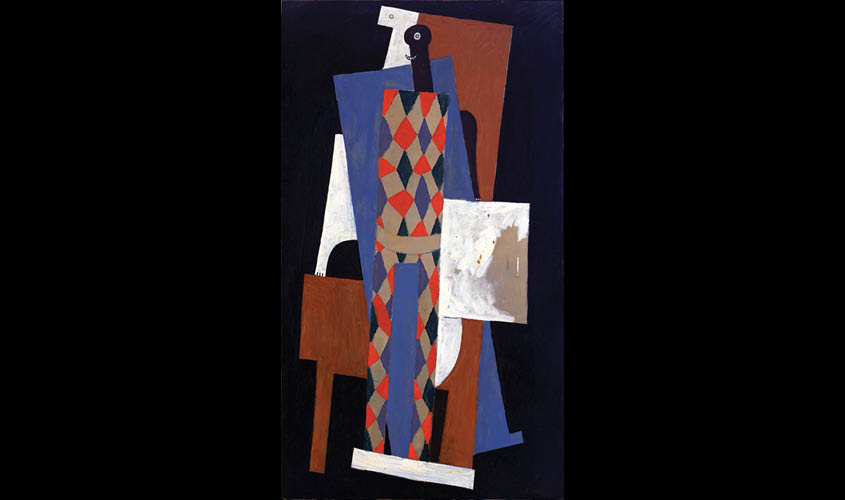Pierre Le Guennec was employed as an electrician and handyman by Pablo Picasso in the early 1970s. A top French court recently convicted him and his wife of having stolen and concealed over 200 artworks by Picasso. Elian Peltier reports.
One September day in 2010, a man who said he was the former electrician of Pablo Picasso entered the Paris office of the Picasso estate, wheeling a suitcase filled with 271 of the Spaniard’s artworks.
The electrician, Pierre Le Guennec, had travelled from his home in southern France with his wife, Danielle. He said he wanted to authenticate 180 watercolor paintings, lithographs and Cubist collages as well as two notebooks with 91 drawings.
The treasure trove had been in their garage for almost 40 years, he said, gifts from Picasso decades earlier.
Thus began a nearly 10-year saga in which a lawsuit claimed that the artworks were “stolen goods”; police began an investigation; courts heard contradictory testimony; and multiple appeals and hearings took the defendants and Picasso’s heirs all the way to France’s top appeals court.
It culminated this past week in a decision by a top French court confirming the convictions of Le Guennec and his wife for receiving and concealing stolen artwork by Picasso.
It was the third time they were found guilty, but Pierre and Danielle Le Guennec, 80 and 76, are not going to jail. The court handed the couple two-year suspended jail sentences.
They were not present for the final verdict. Pierre Le Guennec said in a telephone interview Saturday that the couple had learned of the ruling through neighbours and a newspaper article.
The couple have always denied stealing the artwork. He had been employed as an electrician and handyman in various homes of the artist in southern France in the early 1970s, fixing an oven and setting up an alarm system in at least one property, among other duties.
His wife told The New York Times in 2010 that “my husband was getting ready to leave” one day when Picasso gave him “a box.” The artist, she added, “never explained anything.”
Among the artworks are nine rare Cubist collages, a painting from Picasso’s iconic Blue period, watercolours, lithographs and dozens of drawings in notebooks. They are estimated to be worth several dozens of millions of dollars, although no precise valuation has been done, according to Jean-Jacques Neuer, a lawyer for Picasso’s son. They are now housed at the Banque de France.
Le Guennec said that he went to the Paris office in 2010 because he had recently learned that he had cancer, and he wanted to secure the provenance of the artworks for his two children.
The artist’s son, Claude Ruiz-Picasso, and the administrator of the Picasso estate were startled and intrigued, Neuer told news media at the time.
Gazing at the unsigned cache and realising that it was from the famed Spanish artist, they quickly grew suspicious.
Ruiz-Picasso knew that his father, a temperamental genius who died in 1973, had been an inveterate collector who gave away only artworks that he had recently made—and he would have signed them.
“If you go see the Picasso estate and tell them, ‘These 271 works from Picasso fell from the ceiling,’ or, ‘I found them at a bric-a-brac market,’ no one will believe you,” Neuer said in a telephone interview Saturday.
He said the court ruling this past week marked “the end of a cover-up.”
The artwork that Le Guennec hauled in was estimated to have been painted between 1900 and 1932.
Anne Baldassari, a former president of the Pablo Picasso Museum in Paris, said at the couple’s first trial in 2015, “The Picasso I know wouldn’t let his artworks go. It would be like ripping up one’s own skin.”
Le Guennec later changed his story, claiming that Jacqueline Roque, Picasso’s last wife, and not the artist himself, had given him the artwork.
“It was in 1971. Madam called me as I was leaving Mr. Picasso’s house,” he said Saturday of Roque. “And she said, ‘Keep this; this is for you.’”
Le Guennec’s wife added in the interview that the couple initially said that Picasso had given them the artworks at Roque’s instructions.

They also said that the works had sat untouched in their garage for more than four decades. But Neuer argued in court and in the interview Saturday that because the artworks were in a greatly preserved state, they could not have been stored for so long in a garage in southern France, where they would probably have deteriorated.
More contradictions followed, Neuer said.
Le Guennec claimed to have catalogued all the artworks on his own. But Baldassari said that the descriptions and comparisons were of “an academic level.”
For one drawing, for example, Le Guennec had drawn a parallel with Harlequin, an oil painting by Picasso that is now at the Museum of Modern Art in New York.
But when Neuer asked Le Guennec at the couple’s 2015 trial to name Picasso’s most famous artwork at MoMA, the former electrician did not know what the New York museum was.
He and his wife were convicted that year.
A higher court upheld that verdict in 2016, but the ruling was later quashed by the Court of Cassation, France’s highest court. The Le Guennecs cannot appeal the final verdict, which was handed down Tuesday by the Lyon Court of Appeal.
Neuer speculated that art merchants, probably based in Switzerland, had used Pierre Le Guennec in the same way that traffickers would a drug mule.
Le Guennec called such a scenario “ridiculous” and said he was disappointed with the verdict.
Of his experience as a handyman for Picasso, he said, “It was still fabulous and extraordinary for someone like me, the little people, to get to know these people.”
© 2019 The New York Times

